#Revolutionary African Women
Text
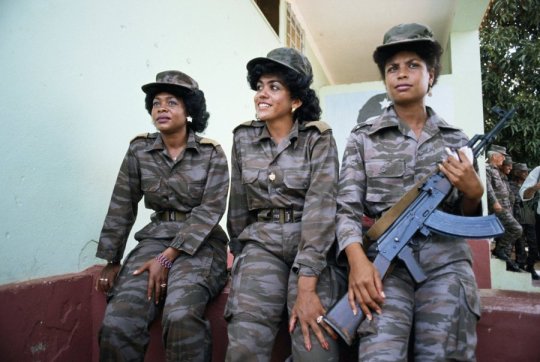

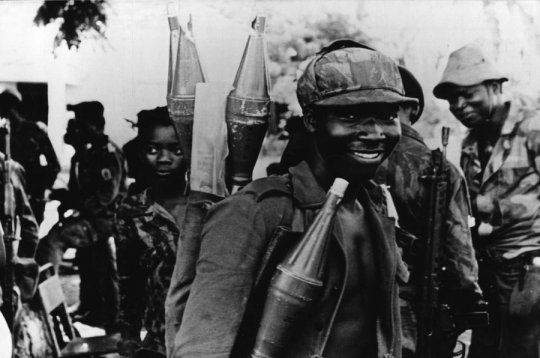




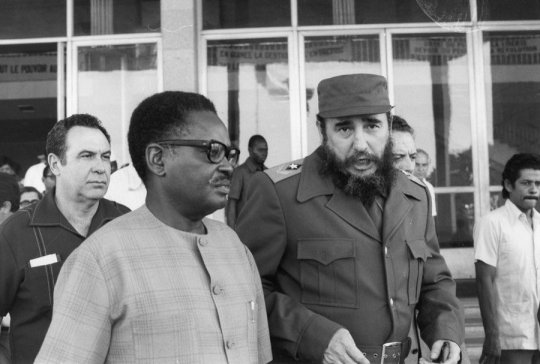

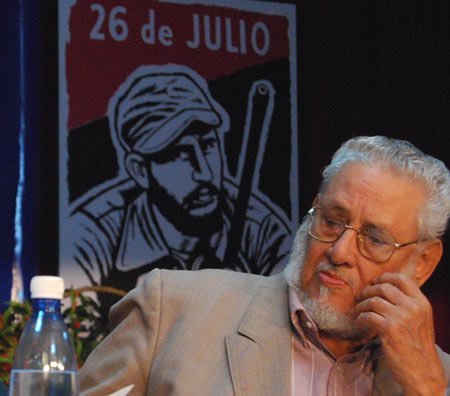
1.On this day in 1975, Cuba began Operation Carlota, its most important military internationalist mission in Africa. It was a major undertaking that contributed to the defeat of the apartheid military regime in South Africa & the independence of Angola & Namibia. More of the story:
2.Across Africa, Cuba provided military instructors & doctors, helping rebels gain their independence from Europeans. After the Portuguese dictatorship fell in 1974 & Portugal prepared to grant Angola independence on Nov. 11, 1975, three local movements fought to take power.
3.The largest rebel group with most popular support was the People’s Movement for the Liberation of Angola (MPLA). They were providing critical training & safe haven to other national liberation forces like the ANC (South Africa), SWAPO (Namibia), and FRELIMO (Mozambique).
4.In early November, the Apartheid South African Army was advancing 45 miles per day toward the capital Luanda. South Africa’s invasion endangered not only Angola’s revolution, but the struggle for liberation throughout the continent.
5.The racists wanted to install a puppet regime led by CIA collaborator Jonas Savimbi who would be ok with white rule in South The MPLA leaders, then understood that only an urgent appeal for international solidarity would enable them to fight of this invasion & secure independence.
6.The Angolans had one unlikely country they could turn to: Cuba. They had already provided military instructors to assist the MPLA. The answer came less than 48 hours later on Nov. 5. Yes. Fidel Castro & the Communist Party of Cuba reached its decision without thinking twice.
7.On another Nov 5 in 1843, a slave called Black Carlota, working on the Triunvirato plantation in the Matanzas region, took up her machete in a slave rebellion in which she lost her life. It was in homage to her that the solidarity action in Angola bore her name: Operation Carlota.
8.On Nov. 7, the first 82 soldiers, carrying light artillery, left to Angola. Over the coming weeks more than 10,000 Cuban troops would land in Angola. More than a decade later, at the end of apartheid, there would be as many as 36,000 troops fighting against the apartheid forces.
9.By the end of 1975, Cuban troops had routed the apartheid army & prevented their takeover of the country. The world owes Cuba and these internationalist soldiers a huge debt.
10.Cuban negotiator, Jorge Risquet and the defence of Cuito Cunavale.
SOURCE: Manolo De Los Santos@ manolo_realengo
#African Liberation#Angola#Cuban Revolution#Imperialism#Apartheid#South Africa#Operación Carlota#Revolutionary History#MPLA#African rebels#Revolutionary African Women#SWAPO#ANC#FRELIMO#Portuguese Colonization
51 notes
·
View notes
Text

Peace Gods, Earths and other Positive People!
What do you think about this statement? It going around in many ciphers on social media!
Can not blame the white man for setting up the current shop? individual or collective reaction to them? What is your thoughts advice?
#nation of gods and earths#supreme mathematics#five percent nation#allah school in mecca#hip hop#5% nation of gods and earths#black women#father allah#black men#black people#latinos#afrobeat#activist#communism#social capital#Revolutionary Black Nationalism#pan africanism#Marcus Garvey
11 notes
·
View notes
Text
#winnie mandela#zindziwa Mandela#uploads#videos#revolutionary women#South Africa#freedom fighters#apartheid#mzansi#melanin#black history#african history#nelson mandela
6 notes
·
View notes
Text
#african/black experience#war on afrikans#afrikan#terrorism#racism#protest#revolutionary#women who led slave revolts#insurrection#Slavery#revolutionary leaders#freedom#Afrikan Women#violence#police terrorism#liberation#Afrikan liberation
5 notes
·
View notes
Text
Revolutionaries (Part 13): Titina Silá, Freedom Fighter
(A series brought to you by Feminist Global Resistance)
The Series:
Patriarchy ensures that male (almost exclusively white colonizer) history is remembered though a few women shine through or are given a twisted footnote.
More often, women are relegated to lost tomes and forgotten lore. Some shine through in song and tales while others, more recently, are beginning to have their stories told…

View On WordPress
#African Independence#Civil Rights#Freedom#Independence#Revolution#Revolutionary#Titina#Titina Sila#Women#Women Warriors#Women&039;s Rights
3 notes
·
View notes
Text
Eugenics and Scientific Racism
Black People are capable of thinking for themselves and we need to exercise this fact. When we follow the narrative of race by the men who invented it and called themselves white, why would any Black People follow this made up rule that demeans everything that is Black.
Low IQ, can't self manage themselves, hypersexual, a menace, poor, broken, stupid, liars, thieves, trouble makers, ignorant, whores, tramps is the narrative indoctrination made by men who calls themselves white.
Everything white is described as being good and positive which is delusional thinking according to the history of white men. These people suffer from behavior projection and they use deflection as their defense.
Black Indigenous People history is positive and civilized and in most cases are people who are compassionate in nature and in morality if they do not suffer from internalized oppression.
Self hate within the Black Indigenous communities worldwide is brain trauma that needs to be addressed by Black women and men within our own communities.
The shit faked race white people are so indoctrinated in their whiteness that they will never surrender this idea unless forced because they can see the benefits of whiteness and the negative side of being Black.
To understand this even better is when we can look at Ruby Bridges a second grade child being attacked by angry white adults up there was no Black People confronting them to protect Ruby Bridges.
The other is the Alabama bombing and the cold blooded murder of four innocent Black Girls who was at a Christian church but still was slaughtered like animals and no one seemed to care in the defense or retaliation of burning down or terrorizing the fake ass white community.
This is just two examples in this post but ask yourself if Black People did the same crimes, what do you think that the fake ass white people would have done? My natural observation would be a war. But Black People take on the religious beliefs of turning the other cheeks and forgiveness for their assassin's.
This is one of the reasons I am an Atheist and I don't believe in giving my enemies the right to harm other innocent people.
#black love#black positivity#black africans#black history#black solidarity#black rebellion#black revolutionaries#black women#black families
0 notes
Text
women artists that you should know about!!
-Judith Leyster (Dutch, 1609-1660)
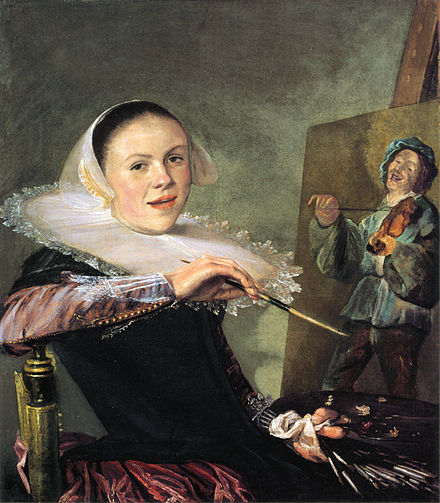
During her life her works were highly recognized, but she got forgotten after her death and rediscovered in the 19th century. In her paintings could be identified the acronym "JL", asually followed by a star, she was the first woman to be inserted in the Guild of St. Luke, the guild Haarlem's artists.
-Artemisia Gentileschi (Italian, 1593-1656)
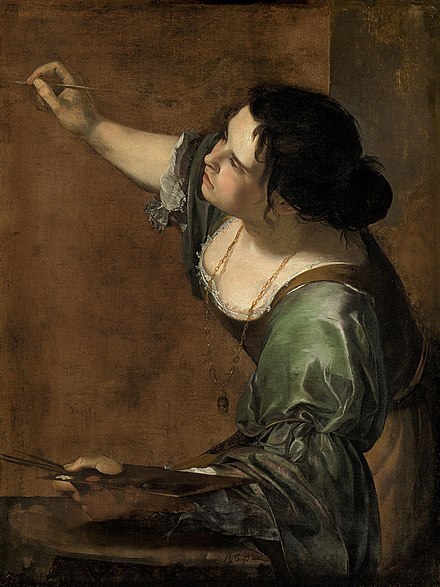
"... Si è talmente appraticata che posso osar de dire che hoggi non ci sia pare a lei, havendo fatto opere che forse i principali maestri di questa professione non arrivano al suo sapere". This is how the father Orazio talked about his nineteen year old daughter to the Medici's court in Florence.
In 1611, Artemisia got raped, and she had to Undergo a humiliating trial, just to marry so that she could "Restore one's reputation" , according to the morality of the time. Only after a few years Artemisia managed to regain her value, in Florence, in Rome, in Naples and even in England, her oldest surviving work is "Susanna and the elders".
-Elisabeth Louise Vigèe Le Brun (French, 1755-1842)
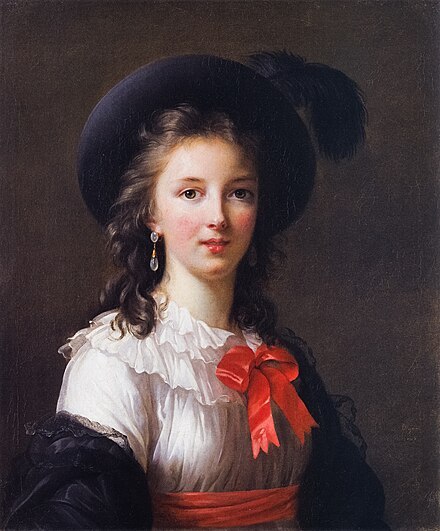
She was a potrait artists who created herself a name during the Ancien Règime, serving as the potrait painting of the Queen of France Marie Antoinette, she painted 600 portraits and 200 landscapes in the course of her life.
-Augusta Savage (Afro-American, 1892-1962)
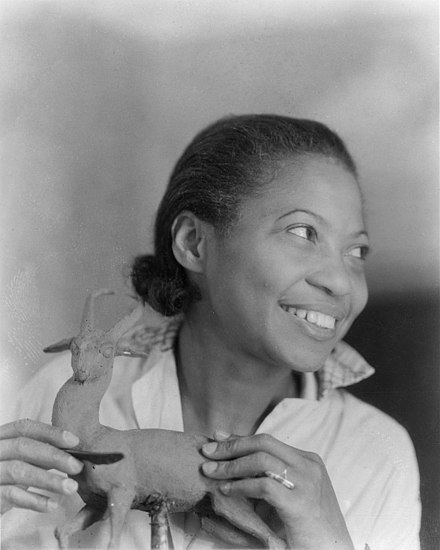
Augusta started making figures when she was a child, which most of them were small animals made out of red clay of her hometown, she kept model claying, and during 1919, at the Palm Beach County Fair, she won $25 prize and ribbon for most original exhibit. After completing her studies, Savage worked in Manhattan steam laundries to support her family along with herself. After a violent stalking made by Joe Gould that lasted for two decades, the stalker died in 1957 after getting lobotomized. In 2004, a public high school, Augusta Fells Savage Institute of Visual Arts, in Baltimore, opened.
-Marie Ellenrieder (German,1791-1863)
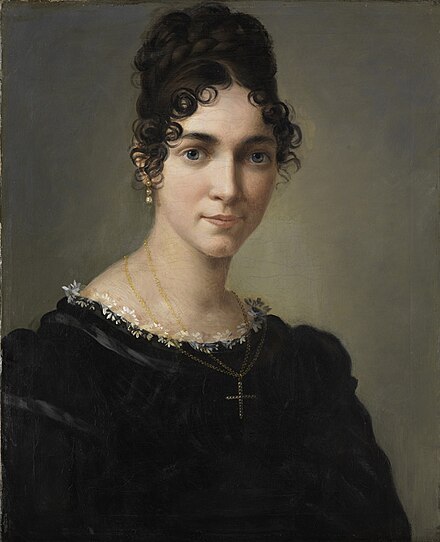
She was known for her portraits and religious paintings. During a two years long stay in Rome, she met some Nazarenes (group of early 19th century German romantic painters who wanted to revive spirituality in art),after becoming a student of Friedrich Overbeck and after being heavily influenced by a friend, she began painting religious image, getting heavily inspired by the Italian renaissance, more specifically by the artist Raphael. In 1829, she became a court painter to Grand Duchess Sophie of Baden.
-Berthe Marie Pauline Morisot (French,1841-1893)
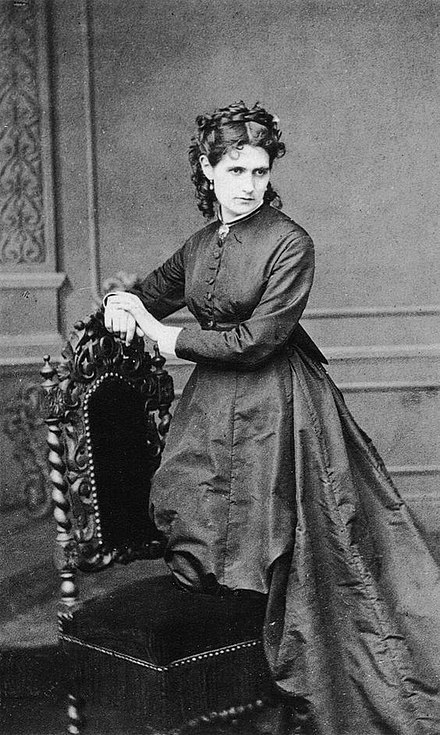
Morisot studied at the Louvre, where she met Edouard Manet, which became her friend and professor. During 1874 she participated at her first Impressionist exhibition, and in 1892 sets up her own solo exhibition.
-Edmonia Lewis or also called "wildfire" (mixed African-American and Native American 1844-1907)
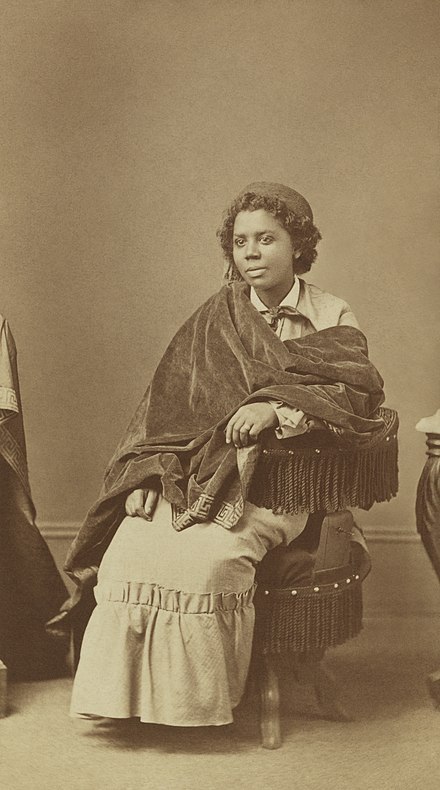
Edmonia was born in Upstate New York but she worked for most of her career in Rome, Italy. She was the first ever African American and Native American sculptor to achieve national and international fame, she began to gain prominence in the USA during the Civil Ware. She was the first black woman artist who has participated and has been recognized to any extent by the American artistic mainstream. She Also in on Molefi Kete Asante's list of 100 Greatest African Americans.
-Marie Gulliemine Benoist (French, 1768-1826)
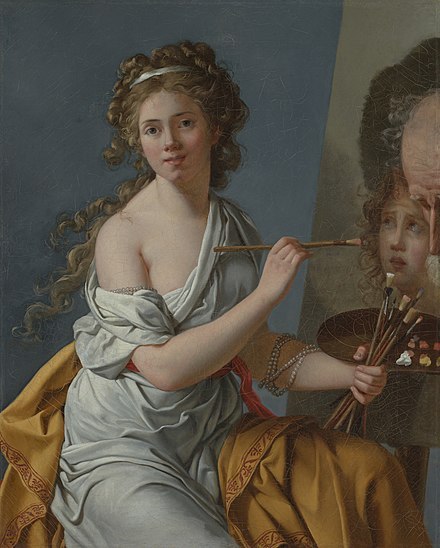
Daughter of a civil servant, Marie was A pupil of Jaques-Louis David, whose she shared the revolutionary ideas with, painting innovative works that have caused whose revolutionary ideals he shared, painting innovative works that caused discussion. She opened a school for young girl artists, but the marriage with the banker Benoist and the political career Of the husband had slowly had effect on her artistic career, forcing her to stop painting. Her most famous work is Potrait of Madeline, which six years before slavery was abolished, so that painting became a simbol for women's emancipation and black people's rights.
-Lavinia Fontana (Italian, 1552-1614)

She is remembered for being the first woman artist to paint an altarpiece and for painting the first female nude by a woman (Minerva in the act of dressing), commissioned by Scipione Borghese.
-Elisabetta Sirani. (Italian, 1698-1665)
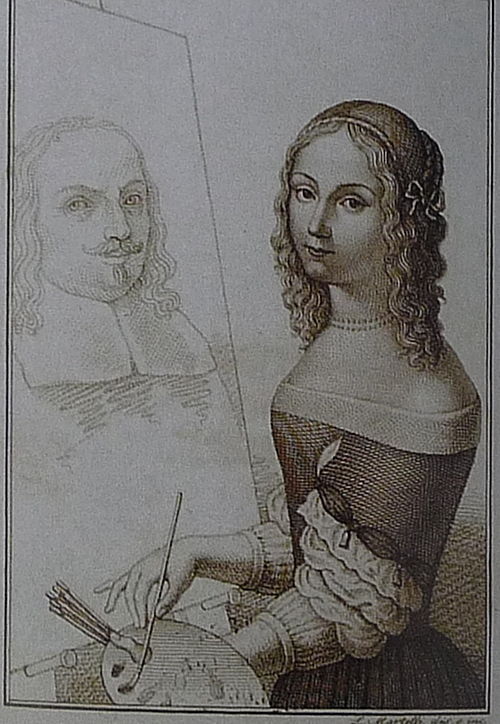
Her admirable artistic skills, that would vary from painting, drawing and engraving, permitted her, in 1660, to enter in the National Academy of S. Luca, making her work as s professor. After two years she replaced her father in his work of his Artistic workshop, turning it into an art schools for girls, becoming the first woman in Europe to have a girls' school of painting, like Artemisia Gentileschi, she represent female characters as strong and proud, mainly drawn from Greek and Roman stories. (ex. Timoclea Kills The Captain of Alexander the Great, 1659).
#judith leyster#artemisia gentileschi#Elisabeth Louise Vigèe Le Brun#Augusta Savage#Marie Ellenrieder#berthe morisot#Edmonia Lewis#Marie Gulliemine Benoist#Lavinia Fontana#Elisabetta Sirani#women artists#renaissance#baroque#art#women in art#artist women#feminism#women history#radical feminists do touch#radical feminists please interact#history#terfblr#terfsafe#cultura#culture
1K notes
·
View notes
Text
black & palestinian solidarities
if you support black liberation but are unsure of your stance on palestinian resistance, here’s a reminder that they are deeply intertwined. after the 1917 balfour declaration by the british government announcing the first support for a zionist state in palestine, zionism and israeli occupation of palestine have followed similar ideologies and practices to white supremacist settler colonial projects, so solidarity between black and palestinian communities has grown over time, seeing each other as fellow anti-imperialist and anti-racist struggles. (if you get a paywall for any of the sources below, try searching them in google scholar.)
palestinians have been inspired by and shown support for black liberationist struggles as early as the 1930s, when arabic-language newspapers in palestine wrote about the struggle by black folks in the united states and framed it as anti-colonial, as well as opposing the 1935 invasion by fascist italy of ethiopia, the only independent black african state at the time. palestinian support for black struggles grew in the 1960s with the emergence of newly-independent african states, the development of black and third world internationalisms, and the civil rights movement in the united states. palestinian writers have expressed this solidarity too: palestinian activist samih al-qasim showed his admiration for congolese independence leader patrice lumumba in a poem about him, while palestinian poet mahmoud darwish’s “letters to a negro” essays spoke directly to black folks in the united states about shared struggles.
afro-palestinians have a rich history of freedom fighting against israeli apartheid, where they face oppression at the intersections of their black and palestinian identities. some families trace their roots back hundreds of years, while others came to jerusalem in the nineteenth century from chad, sudan, nigeria, and senegal after performing the hajj (the islamic pilgrimage to mecca) and settled down. still others came to palestine in the 1940s specifically to join the arab liberation army, where they fought against israel’s ethnic cleansing of palestinians during the 1948 nakba (“catastrophe”). afro-palestinian freedom fighter fatima bernawi, who was of nigerian, palestinian, and jordanian descent, became, in 1967, the first palestinian woman to be organize an operation against israel, and subsequently the first palestinian woman to be imprisoned by israel. the history of afro-palestinian resistance continues today: even as the small afro-palestinian community in jerusalem is highly-surveilled, over-policed, disproportionately incarcerated, and subjected to racist violence, they continue to organize and fight for palestinian liberation.
black revolutionaries and leaders in the united states have supported the palestinian struggle for decades, with a ramp-up since the 1960s. malcolm x became a huge opponent of zionism after traveling to southwest asia and north africa (SWANA), publishing “zionist logic” in 1964, and becoming one of the first black leaders from the united states to meet with the newly formed palestine liberation organization. the black panther party and the third world women’s alliance, a revolutionary socialist organization for women of color, also supported palestinian resistance in the 1970s. writers like maya angelou, june jordan, and james baldwin have long spoken out for palestinians. dr. angela davis (who received support from palestinian political prisoners when she was incarcerated) has made black and palestinian solidarity a key piece of her work. and many, many more black leaders and revolutionaries in the united states have supported palestinian freedom.
while israel has long courted relationships with the african union and its members, there has been ongoing tension between them since at least the 1970s, when all but four african states (malawi, lesotho, swaziland, and mauritius) cut off diplomatic ties with israel after the 1973 october war. while many of those diplomatic relationships were reestablished in subsequent decades, they remain rocky, and earlier this year, the african union booted an israeli diplomat from their annual summit in addis ababa, ethiopia, and issued a draft declaration on the situation in palestine and the middle east that expressed “full support for the palestinian people in their legitimate struggle against the israeli occupation”, naming israeli settlements as illegal and calling for boycotts and sanctions with israel. grassroots organizations like africa 4 palestine have also been key in the BDS (boycott, divestment, sanctions) movement.
in south africa, comparisons between israel and south african apartheid have been prevalent since the 1990s and early 2000s. israel historically allied with apartheid-era south africa, while palestinians opposed south african apartheid, leading nelson mandela to support the palestinian liberation organization as "fighting for the right of self-determination"; over the years his statements have been joined by fellow black african freedom fighters like nozizwe madlala-routledge and desmond tutu. post-apartheid south africa has continued to be a strong ally to palestine, calling for israel to be declared “apartheid state”.
black and palestinian solidarities have continued into the 21st century. palestinian people raised money to send to survivors of hurricane katrina in the united states in 2005 (which disproportionately harmed black communities in new orleans and the gulf of mexico) and the devastating earthquake in haiti in 2010. in the past decade, the global black lives matter struggle has brought new emphasis to shared struggles. prison and police abolitionists have long noted the deadly exchange which brings together police, ICE, border patrol, and FBI agents from the united states to train with soldiers, police, and border agents from israel. palestinian freedom fighters supported the 2014 uprising in ferguson in the united states, and shared strategies for resisting state violence. over a thousand black leaders signed onto the 2015 black solidarity statement with palestine. the murder of george floyd by american cops in 2020 has sparked further allyship, including black lives matter protests in palestine, with organizations like the dream defenders making connections between palestinian and black activists.
this is just a short summary that i came up because i've been researching black and asian solidarities recently so i had some sources on hand; there's obviously so much more that i haven't covered, so please feel free to reblog with further additions to this history!
#free palestine#black liberation#black and palestinian solidarity#black and asian solidarity#original
646 notes
·
View notes
Text
By: Colin Wright
Published: May 3, 2023
The transgender movement has left many intelligent Americans confused about sex. Asked to define the word “woman” during her Supreme Court confirmation hearings last year, Ketanji Brown Jackson demurred, saying “I’m not a biologist.” I am a biologist, and I’m here to help.
Are sex categories in humans empirically real, immutable and binary, or are they mere “social constructs”? The question has public-policy implications related to sex-based legal protections and medicine, including whether males should be allowed in female sports, prisons and other spaces that have historically been segregated by sex for reasons of fairness and safety.
Chase Strangio of the American Civil Liberties Union frequently claims that the binary concept of sex is a recent invention “exclusively for the purposes of excluding trans people from legal protections.” Scottish politician Maggie Chapman asserted in December that her rejection of the “binary and immutable” nature of sex was her motivation for pursuing “comprehensive gender recognition for nonbinary people in Scotland.” (“Nonbinary” people are those who “identify” as neither male nor female.)
When biologists claim that sex is binary, we mean something straightforward: There are only two sexes. This is true throughout the plant and animal kingdoms. An organism’s sex is defined by the type of gamete (sperm or ova) it has the function of producing. Males have the function of producing sperm, or small gametes; females, ova, or large ones. Because there is no third gamete type, there are only two sexes. Sex is binary.
Intersex people, whose genitalia appear ambiguous or mixed, don’t undermine the sex binary. Many gender ideologues, however, falsely claim the existence of intersex conditions renders the categories “male” and “female” arbitrary and meaningless. In “Hermaphrodites and the Medical Invention of Sex” (1998), the historian of science Alice Dreger writes: “Hermaphroditism causes a great deal of confusion, more than one might at first appreciate, because—as we will see again and again—the discovery of a ‘hermaphroditic’ body raises doubts not just about the particular body in question, but about all bodies. The questioned body forces us to ask what exactly it is—if anything—that makes the rest of us unquestionable.”
In reality, the existence of borderline cases no more raises questions about everyone else’s sex than the existence of dawn and dusk casts doubt on day and night. For the vast majority of people, their sex is obvious. And our society isn’t experiencing a sudden dramatic surge in people born with ambiguous genitalia. We are experiencing a surge in people who are unambiguously one sex claiming to “identify” as the opposite sex or as something other than male or female.
Gender ideology seeks to portray sex as so incomprehensibly complex and multivariable that our traditional practice of classifying people as simply either male or female is grossly outdated and should be abandoned for a revolutionary concept of “gender identity.” This entails that males wouldn’t be barred from female sports, women’s prisons or any other space previously segregated according to our supposedly antiquated notions of “biological sex,” so long as they “identify” as female.
But “intersex” and “transgender” mean entirely different things. Intersex people have rare developmental conditions that result in apparent sex ambiguity. Most transgender people aren’t sexually ambiguous at all but merely “identify” as something other than their biological sex.
Once you’re conscious of this distinction, you will begin to notice gender ideologues attempting to steer discussions away from whether men who identify as women should be allowed to compete in female sports toward prominent intersex athletes like South African runner Caster Semenya. Why? Because so long as they’ve got you on your heels making difficult judgment calls on a slew of complex intersex conditions, they’ve succeeded in drawing your attention away from easy calls on unquestionably male athletes like 2022 NCAA Division I women’s swimming and diving champion Lia Thomas. They shift the focus to intersex to distract from transgender.
Acknowledging the existence of rare difficult cases doesn’t weaken the position or arguments against allowing males in female sports, prisons, restrooms and other female-only spaces. In fact, it’s a much stronger approach because it makes a crucial distinction that the ideologues are at pains to obscure.
Crafting policy to exclude males who identify as women, or “trans women,” from female sports, prisons and other female-only spaces isn’t complicated. Trans women are unambiguously male, so the chances that a doctor incorrectly recorded their sex at birth is zero. Any “transgender policy” designed to protect female spaces need only specify that participants must have been recorded (or “assigned,” in the current jargon) female at birth.
Crafting effective intersex policies is more complicated, but the problem of intersex athletes in female sports is less pressing than that of males in female sports, and there seem to be no current concerns arising from intersex people using female spaces. It should be up to individual organizations to decide which criteria or cut-offs should be used to keep female spaces safe and, in the context of sports, safe and fair. It is imperative, however, that such policies be rooted in properties of bodies, not “identity.” Identity alone is irrelevant to issues of fairness and safety.
Ideologues are wrong to insist that the biology of sex is so complex as to defy all categorization. They’re also wrong to represent the sex binary in an overly simplistic way. The biology of sex isn’t quite as simple as common sense, but common sense will get you a long way in understanding it.
#Colin Wright#biology#queer theory#gender ideology#biological sex#sex is binary#intersex#sex denialism#biology denial#sex binary#gender identity#personal identity#identity#identity politics
712 notes
·
View notes
Text
Mini Portraits of Three Revolutionary Women from Overseas Territories
French womens revolutionaries from mainland France are largely forgotten in France. But those from the Overseas Territories and Haiti are even more overlooked.

Victoria Montou aka Aunt Toya (presumed portrait)
(? – 1805)
A former slave working for the colonist Henri Duclos, she would be considered a second mother by Jean-Jacques Dessalines, the future Lieutenant General under Toussaint Louverture, who briefly allied with General Leclerc as a strategic move before fighting against him again and becoming Emperor of Haiti. It is believed that she taught Dessalines about African culture and some combat skills while they were enslaved. Duclos saw their association as dangerous and decided to get rid of them by selling them to different slave owners, ensuring their separation.
On her new estate, where she was exploited again , Dr. Jean-Baptiste Mirambeau, who would later become the Emperor’s physician, noted, "Her commands are identical to those of a general." This observation would prove accurate as events unfolded. Toya led a group of slaves she was affiliated with, and together they took up arms, fighting against a regiment. According to Mirambeau, "This small group of rebels, under Toya's command, was quickly surrounded and captured by the regiment. During the struggle, Toya fled, pursued by two soldiers; a hand-to-hand combat ensued, and Toya severely wounded one of them. The other, with the help of additional soldiers who arrived in time, captured Toya."
Upon the proclamation of independence in January 1804 and Dessalines’ coronation as Emperor, he made Victoria Montou an imperial duchess. However, she fell gravely ill in 1805. Jean-Jacques Dessalines tried to heal her, saying, "This woman is my aunt; treat her as you would have treated me. She endured, alongside me, all the hardships and emotions while we were condemned to work the fields together." She died on June 12, 1805. She was given a grand funeral; her funeral procession was carried by eight brigadiers of the imperial guard and led by Empress Marie-Claire Bonheur.
Marthe Rose-Toto (1762? – December 2, 1802)
Marthe Rose-Toto was born around 1762 on the island of Saint Lucia, which became free following the abolition of slavery in Guadeloupe in 1794. According to some sources, she became a close companion of Louis Delgrès, an officer and fervent republican revolutionary, so much so that he was called a "Sans Culotte" by Jean-Baptiste Raymond de Lacrosse ( I've already discussed Louis Delgrès here: https://www.tumblr.com/nesiacha/751677840407330816/on-this-day-die-louis-delgres-freedom-fighter?source=share) . However, in 1802, Bonaparte sought to reinstate slavery and sent General Richepance. Louis Delgrès and many others took up arms. It is noteworthy that women were as present as men in this struggle to maintain their freedom and dignity. When all was lost, Louis Delgrès and 300 volunteers chose to commit suicide by explosives, shouting the revolutionary cry "Live free or die," after ensuring the evacuation of the estate for those who were not willing. The repression was brutal.
According to historian Auguste Lacour, during the evacuation, Marthe Rose-Toto broke her leg and was brought to the tribunal on a stretcher. She was accused of inciting Louis Delgrès' resistance and inciting the murder of white prisoners. It should be noted that these accusations were generally false, intended to legitimize death sentences. She was hanged, and according to Lacour, her last words were, "Men, after killing their king, left their country to come to ours to bring trouble and confusion: may God judge them!" In any case, Marthe Rose-Toto is considered one of the most important women in the fight against the reinstatement of slavery, alongside Rosalie, also known as Solitude. Their struggles and sacrifices should not be forgotten, and they were not in vain, as slavery was once again abolished in 1848.
Flore Bois Gaillard
Flore Bois Gaillard was a former slave and also a leader. She was reportedly one of the leaders of the "Brigands" revolt on the island of Saint Lucia during the French Revolution. Little is known about her as a former slave, only that she lived in the colony of Saint Lucia. Local historian Thomas Ferguson says of Flore Bois Gaillard, "A woman named Flore Bois Gaillard—a name that evokes intrepidity—was among the main leaders of the revolutionary party," and that during the French Revolution, she was "a central figure in this turbulent group that would be defeated by the military strategies of Colonel Drummond in 1797."
The group that included Flore Bois Gaillard consisted of former slaves, French revolutionaries, soldiers, and English deserters. They were determined to fight against the English regiments, notably through guerrilla strategies. This group won a notable battle, the Battle of Rabot in 1795, with the help of Governor Victor Hugues and, according to some, also with the help of Louis Delgrès and Pelage. However, this group was ultimately defeated by the British, who retook the island in 1797. At this point, Flore Bois Gaillard’s trace is lost. Writer Édouard Glissant imagines in his book that she was executed by the British after the island was retaken in 1797. Nevertheless, she remains a symbol in this struggle and a national heroine. The example of Flore Bois Gaillard is also interesting because it clearly shows us once again that the French Revolution was also taking place in the overseas departments and that slaves or former slaves played a crucial role there in order to make her revolution triumph and were in all the battles.
#frev#french revolution#slavery#haiti#haitian revolution#guadeloupe#women of revolution#napoleonic era
58 notes
·
View notes
Text


BNWO - The Black New World Order
A new world where whiteness / white supremacy is deconstructed through white women like myself breeding ONLY with black men, effectively ending our white bloodlines forever.
Where black masculinity and femininity are celebrated and admired, not oppressed. A world in which the genetic makeup of African men and women is celebrated as superior and more desirable.
Backed by the recent release of the 2020 US demographic statistics, as it indicates what we already knew beforehand: the decline in the white American population. There is a reason the white population is declining so quickly.. Some call it natural selection, some call it the deconstruction of whiteness and the revolutionary transformation of the West. Both would be correct.
Either way the truth is that a black baby inside a white woman's womb does more damage to racism than a hundred demonstrations. Without whites there can be no racism.
As a white woman soon to be pregnant with a black child, I am to soon be forever changed. Willing and eager to forge that connection between black and white where there was none before. Once detached and only transiently committed to black issues, as I could always walk away and be fine, I can now no longer. I am connected to the black race through my children. My mind and heart now truly deeply focused on black issues. 🖤✊🏿
#BLM #SayNoToWhiteBoys #BlackBred #BNWO
477 notes
·
View notes
Text

October 1st is the anniversary of the "fyah bun" uprising in Saint Croix Danish West Indies 1878. Led by Queen Mary Thomas, Queen Susanna “Bottom Belly "Abramson, Queen Matilda McBean and Queen Agnes Solomon. A response to harsh post emancipation labour laws that kept the Africans Impoverished years after emancipation in 1849.
Like other islands the former slave owners controlled the lands and forced the workers to sign contracts for menial wages and also prevented them from travelling to find work for better wages.
In response the Africans set fire to plantations and business places of their oppressors in a mass uprising. The Danish authorities had to call in reinforcements to put down the uprisings which led to the imprisonments of the some of the leaders and gunning down of others.
SOURCE: S.K.N low vibration plate lover @crystos
#Bottom Belly#Saint Croix#Caribbean Archive#African Revolutionary History#Caribbean History#African Rebellion#Black Rebellion#Queen Mary Thomas#Queen Susanna Abramson#Queen Matilda McBean#Revolutionary African Women
7 notes
·
View notes
Text
Celebrating Black Queer Icons:
Tourmaline
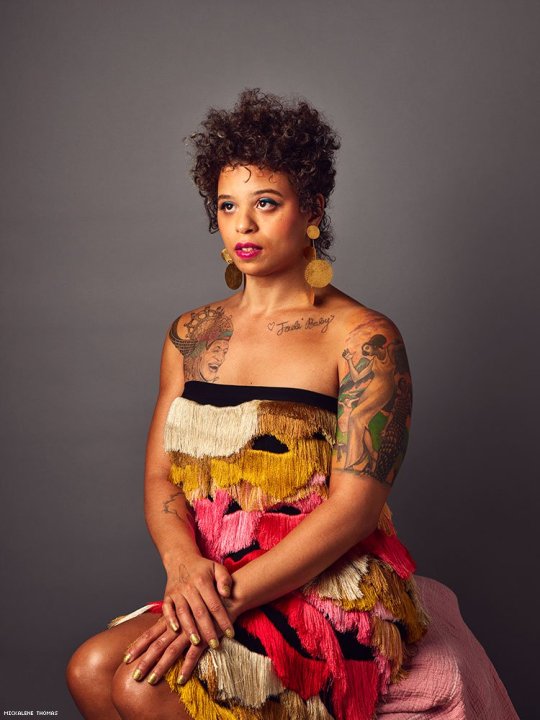

Tourmaline (formerly known/credited as Reian Gossett)is a trans woman that actively identifies as queer, and is best known for her work in trans activism and economic justice. Tourmaline was born July 20, 1983, in the Commonwealth of Massachusetts. Tourmaline's mother was a feminist and union organizer, her father a self defense instructor and anti-imprisonment advocate. Growing up in this atmosphere allowed Tourmaline to explore her identity and encouraged her to fight in what she believes in.
Tourmaline has earned a BA in Comparative Ethnic Studies, from Colombia University. During her time at Colombia U, Tourmaline taught creative writing courses to inmates at Riker's Island Correctional Institute, through a school program known as Island Academy. Tourmaline has worked with many groups and organizations in her pursuit of justice. She served as the Membership Coordinator for Queers For Economic Justice, Director of Membership at the Sylvia Rivera Law Project, and as a Featured Speaker for GLAAD. Tourmaline also works as a historian and archivist for drag queens and trans people associated with the 1969 Stonewall Inn Uprising. She started doing this after noticing how little trans material was being archived, saying that what little did get archived was done so accidentally.
In 2010 Tourmaline began her work in film by gathering oral histories from queer New Yorkers for Kagendo Murungi's Taking Freedom Home. In 2016 Tourmaline directed her first film The Personal Things, which featured trans elder Miss Major Griffin-Gracy. For the film Tourmaline was awarded the 2017 Queer Art Prize. Tourmaline served as the Assistant Director to Dee Rees on the Golden Globe nominated historical drama, Mudbound. Tourmaline has co produced two projects with fellow filmmaker and activist Sasha Wortzel. The first was STAR People Are Beautiful, about the work of Sylvia Rivera and Street Transvestite Action Revolutionaries. The second was Happy Birthday, Marsha, about Marsha P Johnson. Happy Birthday, Marsha had all trans roles played by trans actors. Tourmaline's work is featured or archived in several major museums and galleries. In 2017 her work was featured in New Museum's exhibit Trigger: Gender as a Tool and a Weapon. In 2020 the Museum of Modern Art acquired Tourmaline's 2019 film Salacia, a project about Mary Jones. In 2021 the Metropolitan Museum of Art acquired two of Tourmaline's works for display in Before Yesterday We Could Fly: An Afrofuturist Period Room.
Tourmaline is also the sibling of:
Che Gossett

Che Gossett is a nonbinary, trans femme writer and archivist. Gossett specializes in queer/trans studies, aesthetic theory, abolitionist thought and black study. Gossett received a Doctorate in Women's and Gender Studies, from Rutgers University, in 2021. They have also received a BA in African American Studies from Morehouse college, a MAT in Social Studios from Brown University, and a MA in History from the University of Pennsylvania. Gossett has held a fellowship at Yale, and currently holds fellowships at Harvard, Oxford, and Cambridge. Gossett's writing has been published in a number of anthologies and they have lectured and performed at several museums and galleries of note, including the Museum of Modern Art and A.I.R. Gallery. Gossett is currently working on finishing a political biography of queer Japanese-American AIDS activist Kiyoshi Kuromiya.
I originally intended to do separate profiles for Che Gossett Tourmaline, but could not find sufficient information about Che Gossett, beyond their credentials and current academic activity. That means that this will be the last of these write ups for a bit. I plan on picking it back up in October for the US's LGBT History Month and UK's Black History month. With time to plan ahead and research more I hope to diversify my list geographically and improve formatting. I plan on starting to include cis icons as well, like Rustin Bayard. If you come across this or any other of these posts Ive made this month I would love feedback and suggestions for figures you would like to see covered.
#celebrating black queer icons#black history#black history month#black history is queer history#black history is american history#queer history#tourmaline#che gossett#trans film#trans history#stonewall inn#stonewall uprising#stonewall riots#queer#lgbtq#trans#transgender#nonbinary
207 notes
·
View notes
Text
but also bouncing off of this with ed, racialized masculinity, and rage (and i'm using that term specifically and for a reason) one of the other parts i think is fascinating is the way that rage is dangerous. not to an individual but to the oppressive structures surrounding us.
moc and anger is something that has always been policed and their image in media has to be crafted to fit a specific ideal. i'm taking a look at this through the lens of a biracial african-american, but if you look at the history of how black men are depicted in media you see a stark change occur upon the abolition of slavery. during slavery, the image of enslaved people that was promoted were those of a happy and content group of people. they were infantalized and portrayed as child-like and mentally deficient. you can see gone with the wind as an example of "the happy slave" myth. there's a great teen vogue article you can read if you wanna see more about the myth and how it relates to current pop culture. you can also read more about caricatures and the way they're still normalized currently with mascots of aunt jemima and uncle ben in this op-ed. but like all caricatures, they serve a purpose and fulfill a need of white supremacy. when it came to the happy slave, it was to push the idea that black people were content in slavery, that slavery was a civilizing process that was actually white people helping them, and that the only kind of work black people were capable of is physical labor, that any other kind would make them unhappy.
you can see similarities actually with the way māori men are spoken about and locating their use to physicality. when māori schools (in traditional western sense) were first opened, māori students scored just as well as the european lead schools. white people actually literally forced them to change their curriculum to be labor based completely because anything else was thought of as too complex for their simple minds or some bullshit like that. there's a great paper by brendan hokowhitu "The Death of Koro Paka: “Traditional” Mäori Patriarchy" that goes in depth about the white supremacist fetishization of māori physical labor.
in the same way that māori school curriculums were changed, the happy slave myth was a way for white supremacy to maintain a status quo that naturalized using poc for hard labor while patting themselves on the back for doing them a favor. for a long period of time in america, black rage and anger was erased. it was hidden from white eyes to shield them from having to face the reality of their brutalization. this is why frederick douglass was so revolutionary, btw. he pulled back the curtain on the myth, showing these caricatures as the shadow puppets they were, forcing white people to look at the brutality they were inflicting on real human beings.
the abolition of slavery changed this image. it's like it underwent a PR campaign overnight (which it kinda did) where suddenly pictures of slaves singing with huge grins were replaced with the image of animalistic, out of control, absolutely furious black men. part of this was from a white paranoia projecting their anxiety that black people will come at them for revenge from slavery. but the main reason for this was because of a caveat in abolition that still allowed slavery in the case of incarceration. (the 13th is a documentary on netflix that goes in depth on this!) you can't say that you're enslaving people because they like it and it makes them happy anymore, so what do you do? you change that narrative. it's not to keep them safe, it's to keep you safe especially your women safe. jim crow laws are rolled out, black men in the south are either incarcerated or lynched (the great migration from the south was fleeing white terrorism!) the myth of the angry, violent, savage negro takes form.
the point i'm making related to ed, beyond the history lesson, is related to that idea of white fear of moc's anger. when we talk about the anger of moc, we don't erase it. that's already happened before, and it was used against us. instead we lean into the idea of what makes white people so fucking shook at the idea of an angry moc.
a huge part of this that i think is very relevant to ed is the need for the state to control him. piracy is disruptive as fuck. a huge portion of pirates were ex-navy who left because they no longer wanted to put up with how fucking shitty the navy is to their men (no, it wasn't for radical reasons 😭) piracy also had a large amount of black people fleeing slavery too! one of the reasons black pirates were so scared of capture was because unlike their white counterparts, they wouldn't be hanged, they'd be brought to plantations. if you want to read an interesting article about piracy and race i'd suggest this one! it's untrue to say that piracy was an aracial utopia, but the history of it is complex and fascinating. (fun fact, blackbeard actually gets cited sometimes as one of the pirate ships that were a lot more equitable with race where the famous pirate black ceasar served upon his ship. this does not mean blackbeard wasn't horrifically racist. he still sold slaves and raped black women. do not mistake this for him being an antiracist legend)
pirates were able to operate outside of state control and this was terrifying. at times, they would work with the navy, also a fun fact. hornigold is famous for attacking spanish ships and leaving the british ones alone, meaning england just kinda looked the other way lmao.
but for ed (the character) i think this is what grants blackbeard so much power in a way that just plain old edward teach would never be able to harness. all the way up the chain, blackbeard is feared, and blackbeard is respected. the mere chance that blackbeard would be willing to take an act of grace and concede that power to the king is so lucrative that even an admirals subordinates are willing to go against him for it. to have blackbeard under english control is the greatest propaganda anyone could've offered them.
i think i said this yesterday, but as a powerless child being told that he can't have fine things, that's just how it is, it can feel like your only two options are either anger or despair. ed chose anger, and by doing so, ed chose survival. he can despair over his surroundings or he can get angry, say fuck this, join a pirate ship, and go ham. he can despair over his mother's abuse, or he can get angry. angry that she's treated like this. angry that his father is so cruel. angry that there is nobody who is willing to help them. angry enough to kill your father. not because ed is, at his core, a violent person, but because, at his core, he's a loving one who will kill off a part of himself if it means keeping his mother safe. ("when you kill, you die as well.")
and not just anger, but rage? it's powerful. it's the natural conclusion for having even the slightest awareness of your circumstances as a moc, and it's in the states best interests to quell that as much as possible. not to be like "malcolm x said" but also malcolm x said "Usually when people are sad, they don't do anything. They just cry over their condition. But when they get angry, they bring about a change." and i think there's something to that with ed, where he's trying to change the circumstances of his life to no longer be a nobody. that anger has served him well over the last few decades, his path has scorched a legacy, but it's also burned him out on the way. something stede offers to him alongside retirement is the possibility that he may be able to let that go. doesn't have to hold onto that anger anymore and wield it like a weapon. maybe love can be enough?
and in this case, it doesn't work out for him. there's many reasons why, but a big one is that ed hasn't yet done the introspection necessary to move forward. he struggles with acknowledging his past (he frequently forgets his acts of cruelty) and although he may be ready to let that go, it's not so easy. it clings to him. also why i think izzy's role is so important and not just black and white villainy. what he and izzy had worked. for decades it served them both well. but now it doesn't anymore and ed wants to let that go, but it isn't that easy to sweep it under the rug and pretend it never happened. izzy is his reminder of that, good and bad.
i mentioned malcolm x earlier, and it feels worth it to bring up how much a disservice history does to his legacy where he's painted as angry with no other nuance. they called him the angriest negro in america. there's also a fascinating legacy within the black male community of attempting to claim him for black masculinity at the expense of others, but malcolm x was also a loving husband and father, and a huge proponent for self-love. his love was complex, and it was only after he began to start making connections globally and start advocating for a more nuanced approach of black radical politics that he was assassinated.
ed is angry, and in that anger is power, but it's also exhausting. he wasn't wrong that love and vulnerability is something that will heal him, but he also hadn't yet done the work of examining his own internalized self-hatred, despair, loneliness, and anger. he's not going to have a fairytale ending where stede swoops in and rescues him from the evils of piracy, but will need to dig deeper into his emotional roots and connect with that same complexity of love that figures like malcolm x embodied.
this will probably look different for ed though since there are māori practices specific to that self journey of healing. Te Whare Tapa Whā is a model of health and wellbeing that takes a holistic māori and indigenous approach to health that positions five tenets as necessary for one's health.
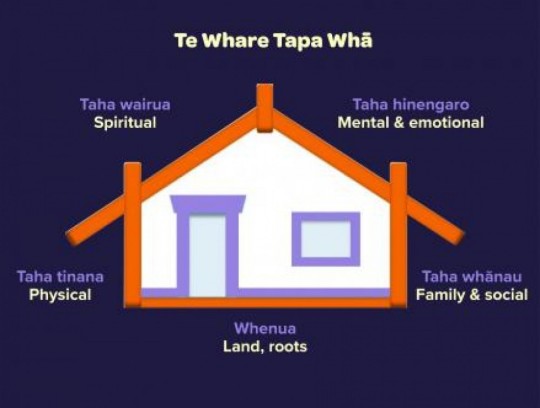
i don't feel like i can do it justice summarizing it since it's focused on five culture specific concepts, but here's a neat link!
this is something i try to keep in mind when writing ed and his healing. even if i'm not naming the model specifically, i think it's great to check back in on "is ed getting these five needs?"
i would highly recommend reading more about māori approaches to mental and physical health where the trauma of colonization is something that is brought to the forefront of needing to be addressed to heal. not only that, but how strong a backlash this receives from white groups because acknowledging that pain and history is dangerous to white supremacy.
but ed's relationship to emotion is something i really love about the show. rage and anger threatens the control of the british empire. it wreaks havoc across the seas and makes a mockery of their power. with ed though, when he's able to take control over the navy and for a brief moment becomes the most powerful person on that naval ship, is the act of grace. an action born from his love of another person. it feels so? hopeful and kind. and it wouldn't hit as hard if there weren't those moments of pain. after all, ed's desire for softness becomes all the more meaningful when we know he's use to only being treated roughly. that contrast is what keeps us feeling.
211 notes
·
View notes
Text
#african/black experience#war on afrikans#WWII#battalion of Black Women erased from history#protest#revolutionary#racial profiling#Black History
0 notes
Text
Why do so many Blue states have Red governors and so many Red states have Blue governors?
Short answer: Because when you are under attack constantly irl, you don't take your rights for granted.
The Governor of Kentucky (and potential VP pick ((crossed fingers)) ) Beshear is STAUNCHLY pro-trans, pro-choice, and pro-union.
Beshear is ALSO one of the most popular governors in the COUNTRY
Keep in mind that Red states suffer from gerrymandering and voter suppression every year. And they have BLUE, PRO-TRANS governors.
If you are in a Blue state with a Red governor. It's because people aren't voting.
As a former Tennessean, If you are able to vote and don't, I'm going to assume you are 1, lazy, and 2, ungrateful. People who fought for your rights were taking direct action and you can't even GO OUTSIDE AND CHECK A BOX??? Shameful.

1920, This sign was designed to be placed in the window of a home so that all who passed would know that the woman within had exercised her right under the 19th amendment and registered to vote. It also served as a reminder to other women to do the same. -Smithsonian

Oklahoma Federation of Colored Women's Clubs, American, founded 1910, National Association of Colored Women's Clubs, American, founded 1896 - Smithsonian, National Museum of African American History and Culture
And you can't even check a box.
Don't complain if you choose not to vote. If you ARE voting (thank you), talk to your friends and relatives about it. Talk to them about how Red states & Southern states are coming up with revolutionary policy and are changing people's lives for the better BECAUSE PEOPLE VOTED.
There are Native Americans fighting for citizenship who can't vote.
100 years ago, U.S. citizenship for Native Americans came without voting rights in swing states
When you have the right to vote (and the time & money because voting day isn't a holiday + not everyone is old enough), but choose not to, you are spiting in their faces.
Register to vote, be the change you want to see this year. It takes about two minutes.
If you are under 18, Pledge to vote
#politics#us politics#world politics#lgbt#lgbtqia#lgbtq#lgbtq+#queer#kamala harris#joe biden#donald trump#trump#2024 elections#election 2024#us elections#american politics#project 2025#black history#african american history#civil rights#american history#civil rights movement#us history#feminism#feminist#intersectional feminism#intersectionality#trans rights#transgender#aroace
14 notes
·
View notes